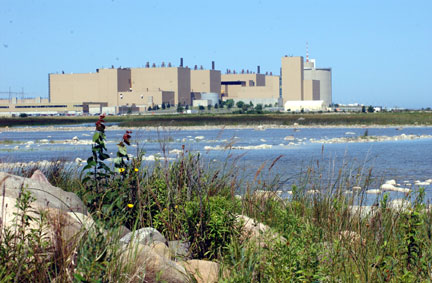Canadian operators of Candu reactors are to check for alpha radiation hazards and improve controls after an incident at Bruce A nuclear power plant.
Earlier this year Bruce Power had to check 192 staff who had been near to fuel handling operations after corrosion products containing cobalt-60 were unwittingly dislodged during maintenance. Although no-one had been hurt, Bruce notified the Canadian Nuclear Safety Commission (CNSC) of the incident because it could have received substantial media coverage or had high visibility.
Now the CNSC has written to the other operators of Candu nuclear power reactors requiring them to survey for similar radiation hazards and tighten controls to mitigate potential exposures for their workers. Hydro-Québec, NB Power and Ontario Power Generation have until 30 July to report back. While the CNSC will no doubt be discussing the matter with its counterparts in Argentina, China, India and South Korea, the operators of Candu reactors in those countries will also be sharing information, for example through the Candu Owners Group.
 |
| Bruce A nuclear power plant |
After its lengthy testing program Bruce was able to confirm that none of its workers were exposed to more radiation than regulations allow. Company CEO Duncan Hawthorne said in May that Bruce had done the widest possible screening of its staff: "A scientific answer that says you haven't been in [the affected area] often enough isn't good enough. We've increased the number of people [tested] so we can say to anyone who was ever in the vault, 'regardless of whether we think you need a sample or not, you can have a sample.'"
Bruce said the radiation exposures occurred while workers inside the vault were cutting, milling and cleaning feeder tubes near the face of reactor 1. Although workers directly involved in the process were adequately protected from alpha radiation with air-supplied protective suits, some workers away from the area were not wearing respiratory protection. The same work had occurred earlier at unit 2 without incident.
Hawthorne said: "We've revisited all of our radiological permitry to make sure that it is properly addressing the prospect of alpha so that we can include it in our pre-job briefs. We've also extended our dosimetry laboratory on site so that we can do much of our own data collection and the analysis within a site-based facility. We think this is the first one in North America."
Researched and written
by World Nuclear News




_18938.jpg)
_33584.jpg)
_82983.jpg)
_49382.jpg)





